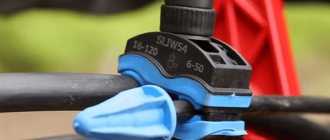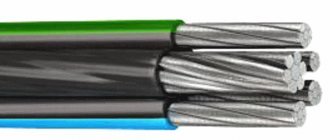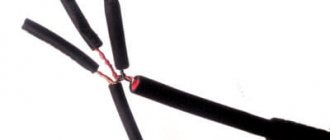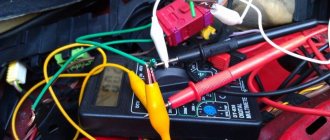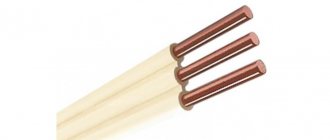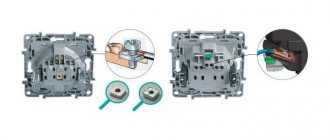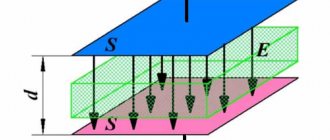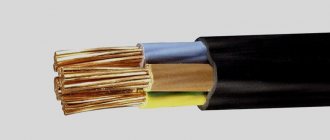Effective cleaning methods
There are many proven methods that allow you to clean copper products even at home.
Let's get acquainted with the most effective of them. One of the most accessible home remedies for cleaning objects made of copper is regular tomato ketchup. In order to clean copper with this product, it is simply applied to the surface to be treated and left on it for 1-2 minutes. After this exposure, the ketchup is washed off with a stream of warm water. As a result of this procedure, the copper product will return to its original shine and brightness of color.
You can clean copper items, if they are not very dirty, at home using regular dishwashing gel. To do this, use a soft sponge on which detergent is applied. Wash it off under running warm water.
This cleaning method is used if it is necessary to clean a large copper product that cannot be placed in any container. The surface of such an object is wiped with half a lemon. To enhance the effect of lemon juice on copper, you can clean it with a brush with bristles that have sufficient elasticity.
A product called “vinegar paste” helps give copper its former shine. It is prepared as follows. In a special container, mix wheat flour and vinegar in equal proportions, bringing the resulting mass to a homogeneous state. Then the dough is applied to a copper object and left until completely dry. The crust formed after the mixture has dried is carefully removed, and the copper surface is polished to a shine with a piece of soft cloth.
There is a radical and effective method of cleaning products made of copper, which is used if their surface is heavily soiled and it was not possible to clean them with other means.
- Vinegar is poured into a specially prepared stainless steel container, which is mixed with a small amount of table salt.
- Place the item to be cleaned into the resulting solution and place the container on the fire.
- After the cleaning solution has reached a boil, turn off the heat under the container and leave it on the stove until it cools completely.
- After the solution has cooled, the product to be cleaned is removed, washed under running warm water and its surface wiped dry.
Insulation stripping tool: varieties
Mainly, the tools are divided into 2 categories:
- For home use.
- Industrial use.
Home category devices are suitable for small-scale work. Most often, such devices are purchased for personal instruments in case the owner requires prompt intervention in a local small-scale breakdown.
An industrial (professional) grade tool is intended for use in large-scale work environments. For example, when an electrician is installing a cable system. In this case, the technician needs to strip the ends of the wire before installing them. Professionals use a device called a stripper for these purposes.
How to strip a wire while maintaining its properties
Let's start with simple methods.
Knife
A universal tool is used: a regular pen or office tool.
Improving the use of knives, many electricians make homemade devices for stripping insulation. For example, you can use a safety razor blade by simply screwing it to a clothespin.
Using holes of different diameters (on a clothespin), you get a universal tool for removing both the outer sheath and the coating directly on the conductors.
The simplest factory-made insulation stripping pliers work on this principle. The outer sheath is removed using calibrated holes, and conductors of small diameter are stripped using a blade with a molded hole.
Thermal method
If the question arises: how to quickly remove insulation from a wire, all means are good. Many craftsmen simply burn the ends of the conductors with a lighter or match. The method is not the best: Firstly, the cable may catch fire. Secondly, the remaining part of the shell loses its properties at a distance of 1–2 cm from the cleaned area. And finally, the conductor itself (copper or aluminum) is destroyed by such thermal effects.
If you need to quickly strip the wire, but there are no cutting tools, you can use a soldering iron. The tip of the conductor is burned with a hot tip, after which the insulation is easily removed.
There are thermal tools of industrial design.
Stripping the wires of insulation is carried out as follows: the heating elements are pressed to the cut point, the sheath is melted with a short pulse, the conductor remains untouched. Such devices can be stand-alone or part of soldering stations.
Advantage of wire thermocouples:
- Heating occurs pointwise; the copper or aluminum core does not change its properties.
- A thin melt line does not lead to waste of material.
- A sealed ring is formed around the shell, preventing the penetration of moisture.
The only limitation is the insulation material. Thermal stripping is used only in cables with polyvinyl chloride insulation. The fluoroplastic or rubber shell can only be removed mechanically.
Mechanical devices for stripping industrial wires
The most popular electrician tool is the “Insulation Stripping Complex”, known by the abbreviation KSI.
The operating principle is as follows:
During the initial compression of the pliers, the conductor is clamped between the grooved jaws (as in pliers), the other end is captured by the knife mechanism. The cutting attachment is spring-loaded and does not cut through the shell to the metal. This way the current-carrying core is guaranteed to be preserved. Next, the working levers are separated, and the notched sheath is removed from the wire.
The length of the area to be stripped is set using a limiter, against which the front wire rests when inserted into the tool.
There are certain restrictions: the tip cannot be too long. If you need to clean a long area, the process is repeated several times. In this case, the wire does not rest against the limiter, and the shifted section of the sheath is removed manually.
The complex copes well with both mono conductors and multi-core cores. There are restrictions on the diameter of the wire: a cable with a cross-section of more than 4.0 is almost impossible to process.
The next tool is simpler. End pliers for stripping insulation.
Designed for a diameter of up to 6.0 squares; it is difficult to expose a thicker wire manually. Between the cutting tips there is a screw stop, with which the diameter of the conductor is set. The distance between the grips is chosen to be slightly larger than the diameter of the current-carrying conductor. This is done to reduce the risk of damaging the metal. After squeezing the handles, the sheath is removed with a sharp movement along the wire. Working with such a device is not as convenient as with a CSI, but this is justified by its low cost.
Nippers, or the cutting sector of pliers, work in a similar way. Only stripping the wire with their help requires some skill.
The following device is designed to work with large diameter cables. This is a complex knife with a grip.
It can be used to strip wires of any length. First, a transverse incision is made, then a longitudinal one.
After which the sheath is easily removed without damaging the central conductor.
Stripping varnish-coated conductors
Such a conductor is used in transformer windings. Instead of a dielectric sheath, a thin varnish coating is applied to the copper core. The conductor is cleaned with a knife or sandpaper.
Complex insulation removal options
Certain difficulties arise when removing fabric insulation. The thread is wound quite tightly, making it difficult to cut it with a knife. Here they do things differently. Using sandpaper, clean the desired area on one side. The rest of the thread can be easily removed.
Radio amateurs often use PELSHO wires. They use thread winding. So they remove it using fine-grain sandpaper. The conductor is placed on a wooden support, and then with several movements, pressing the abrasive against the support, the thread is destroyed on one side. Then it is easy to remove.
If it is necessary to expose the shielded wire, cut through the outer sheath and then remove it. Next, the shielding braid is unraveled, releasing the insulation in the required place. Only then is the insulation removed from the middle conductor.
In some cases, it is possible to remove plastic from metal using heated surfaces. This is what radio amateurs sometimes do to remove the protection with a soldering iron.
Sometimes the coating is removed by burning it over a fire. This method is extremely dangerous. It is prohibited to use it. Harmful gases are released, the insulating coating is removed unevenly, and some of it does not perform its functions after overheating.
Any home craftsman can remove the insulation from a wire using a sharp knife. It is not difficult to make the simplest devices for this work. Purchased accessories will allow you to do this work quickly and efficiently.
What can you use to strip wires?
Even if there is no stripper in the house, you can always find something to expose the metal end of the wire. This could really be any sharp object used to cut the plastic and something that can apply pressure to remove it. But in order for the work to be carried out more efficiently, it is worth having one of the following devices in the house.
Cable knife
A cable knife differs from a kitchen knife both in shape and in the quality of the steel. It's worth having in your closet just in case. Moreover, it costs very little, and can be useful for a wide range of tasks besides exposing the wire tip. The shape of the blade is similar to an eagle's beak, the tip runs along a concave line.
Pliers
Insulation stripping pliers – not to be confused with regular pliers. They are very different in appearance. This tool has protrusions with holes for wires of a certain diameter range. Another feature is the presence of a cutting edge. These pliers can be adjusted to the wire diameter of a given range. That is, this part is quite highly specialized and requires time spent on adjustments. There are much more convenient devices.
Pliers
The tool is similar to pliers, which are the prototype of pliers. But unlike their predecessor, they have two or three toothed recesses. When the wire is exposed, the smallest notch may be useful, and for stripping the cable, the larger one will be useful. This tool will be useful in the home where it may be needed infrequently, say, to fix an outlet. The car owner should think about something more convenient.
Automatic pliers
The mechanism of their work is very interesting to observe. At the ends of the clamps there are special jaws, which, when compressed, make an additional movement that pushes the insulation apart. This tool, unlike those listed above, is capable of carefully exposing the wire not at the end, but in the middle.
Stripper
For those who deal with wires more than once a year, it is highly recommended to purchase a stripper. The device is similar in principle to pliers, but at the end it has several holes for different wire diameters. Usually there are five.
Which stripping tool should I choose?
So what should you choose? Those who constantly work with wires need to have at least two tools - a stripper and automatic pliers. The stripper works only with the tip of a cable or wire, in this it is inferior in versatility to pliers. However, among all the tools considered, it performs its functions the fastest, is the simplest of all, and harms the wire less than other tools. Both pliers, knives, and pliers are designed in such a way that they can scratch the metal part, and this will negatively affect the conduction of current. The stripper does the job without any damage.
Automatic pliers are the only one of the listed tools that strips the wire in the middle. More precisely, a knife can perform the same function, but there is a risk of damaging the metal. Well, those who do not have any of the tools in the house will have to perform the operation with an ordinary well-sharpened kitchen knife. The process will require skill, and an amateur electrician risks cutting himself.
How to quickly strip insulation from a cable or wire
The figure shows a typical task.
Cable VVG 2×1.5mm2, consisting of two single-core conductors, covered with insulation, and housed in a black protective sheath. How to remove the sheath and insulation from a cable so that it is fast, safe, high quality and reliable? And by quality I mean the stability of the result obtained. Of course, when it is possible to remove the insulation from the cable on a table, and not in a cramped electrical box, and you need to make a couple of connections, everything can be done slowly, measuredly, checking every step. What if you need to finish the apartment in a couple of days before plastering? I tried three options for removing insulation from the cable and, as usual, settled on the third:
— cleaning with a stationery knife;
— stripping with a special installer’s knife;
- cleaning with a special device.
Stripping with a utility knife is the easiest and most affordable way to strip wires and cables. But also the lowest quality. Stripping the cable sheath is usually done in two stages. First, the shell is cut in a circle. Then the shell is cut along its length. And then it is removed, exposing individual wires in insulation.
So, if you make a cut around the cable with a utility knife and do not calculate the force, then the insulation of the wires is easily cut, which reduces the safety of such a cable in operation.
And if this is not scary when the cable has not yet been installed (you can cut off a piece and try again), then for a cable, for example, walled up in a wall, there is no room for error. When I did the wiring for my parents, I had to leave several wires cut in this way in the socket boxes.
Another problem is the cut along the length of the cable. Firstly, it is easy to cut the wire insulation lengthwise, which is even worse than cutting it. Secondly, it is easy to injure your finger if the blade slips.
The second method is with a special mounting knife. There are many models, I chose the one that is crocheted. This knife is slightly more convenient than a stationery knife. But due to the thicker blade, it can be used not with the caution of a surgeon, but more relaxed.
Although it is quite difficult for them to cut the insulation. But what makes a crochet knife useful is cutting along the cable. The hook fits securely into the cable sheath and is practically impossible to jump out of. Therefore, cutting along the cable is fast, safe and neat.
But still. Such a tool does not allow for high-quality stripping of the shell. By quality, in this context, I mean repeatability (sameness) of results for each removed shell. I recently came across this tool.
Its price varies greatly - from 600 rubles. up to 3500 rub. But in terms of quality of work there is almost no difference. The principle of its operation is as follows. Using your thumb, you pull off the bracket, under which the wire is inserted. A small knife appears from the handle, rotating around its axis.
When the cable gets there, the clamp presses it against the knife. Next, you need to wrap the tool around the cable several times. This achieves its incision.
Then, without removing the tool from the cable, you just need to pull it strongly towards the end. In this case, the knife will turn itself and begin cutting along the shell. All that remains is to remove the shell and continue installation work.
The only inconvenience of this tool is that you need to use the wheel at the end to set the cutting depth of the knife for each cable. It takes me about two minutes and a piece of cable on which I check the settings.
However, after adjustment, the quality of stripping is predictably good. I would also like to touch upon the issue of removing insulation from stripped conductors.
The tool described here does not cope well with this task, since it cannot “flatten” a thick cable, like many thin wires, it cuts the insulation only a little, pointwise, at the bottom and top. This is not enough for it to tear and come off. An attempt to apply force leads to scoring on the core due to the “biting” of the tool’s knives into the soft copper.
And here the installer’s knife described above is very effective. The hook blade increases the radius of hooking the knife onto the wire, and you can quickly, in a split second, cut it along almost its entire diameter. After which the insulation is quickly and carefully removed. Plus, the hook blade prevents the knife from slipping off the wire.
How to strip a flat cable
Previously, in the article I discussed methods for removing protective insulation from VVG cables. In principle, when it comes to round VVG, using a special tool with a stripping bracket is justified. But one day I had to work a lot with VVG-p (flat cable). Because of this, I slightly revised my preferences.
The VVG-p cable turned out to be much more convenient and practical. It is more convenient to place it under the plaster. Generally speaking, you can save a lot of time if you do not make grooves under the plaster, but simply route the cable along the walls, and then plaster it on top. Therefore, VVG-p is preferable in this sense. The VVG-p 3×2.5 mm2 cable has a thickness of only 5.3 mm. Together with the dowel clamp - 9.3 mm. The layer of plaster, as a rule, is at least 1.5 cm, so everything grows together.
And cutting a flat cable turned out to be faster and more reliable with a knife with a hook. You put the cable on the board and run it. The main thing is to place the blade immediately deeper into the insulation so that it pushes the veins apart and cuts between them. Surprisingly, this knife has never cut the insulation from the cores themselves.
The principle of stripping wires from insulation
Wire stripping
Professional tools use two principles for removing protective coating from cables:
- Break. This method can be compared to stripping wires with teeth, when a piece of insulation, clamped between the teeth, is torn off from the rest of the coating layer with a force directed along the conductor.
- Cutting. In this case, the cutting edge cuts through the protective layer in a circle, without damaging the current-carrying core. Then, part of the cut tube is removed from the conductor with little effort.
Professional tools for stripping wires are:
- Manual.
- Semi-automatic.
- Automatic.
To work with a small number of wires at home, you can use simple methods for stripping their ends.
Simple ways to strip wires
Stripping cable ends can be done in two ways:
Thermal influence. This involves heating the core to the melting temperature of the insulation. This is done:
- Melting the PVC insulating layer with a soldering iron, and then removing the coating with pliers. The big disadvantage is the presence of toxic fumes and corrosion on the soldering iron tip.
- A lighter.
- Heated nichrome thread.
Removing insulation using thermal method
Such techniques are best used for thin, low-power conductors, which are used in electronics, communication devices, and audio equipment with stranded soft conductors operating in circuits where the voltage is approximately 5 volts.
Electrician's knife
Electricians often make their own knives. For this:
- Take a piece of a metal hacksaw blade with a small blade.
- They sharpen it on an emery machine to give the tool the shape of a sharp, thin wedge.
- The handle is made by tightly winding the wire, onto which several layers of electrical tape are applied.
This blade perfectly cuts off a layer of polyvinyl chloride, but incorrect handling of the knife can easily damage copper or aluminum metal located close to the insulation.
The video will show you how to quickly remove insulation from a copper wire at home.
Which method is the most effective and least expensive?
If you are looking for an option on how to quickly remove insulation from copper , purchase a side cutter and a stripper. These tools carefully remove plastic protection from conductive wires and help you earn high rewards for bulk quantities in the "gloss" category.
Stages of cleaning copper with a stripper:
- insert the end of the wire into the hole of the tool;
- hold the handles of the stripper and cut through the winding;
- pull out the current-carrying wire.
Using a stripper correctly, you can quickly remove the winding and reduce the risk of damage to cable products during operation. The side cutter cuts through the wire. Pinch the free end between the blades, twist and pull. Using a special tool allows you to maintain the quality of the conductive wires. Then it accepts copper cable without insulation at an increased rate. Our specialists know how to remove the braid from a copper wire without damaging the metal.
How to Strip Insulation from a Round Cable
How and where to work with such a stripper, what methods and knives to remove insulation, and what are their advantages? One of the advantages is the ease of operation of Jokari inside switchboards, when all the cables are already routed inside and the distances between them and the switching equipment are minimal.
That is, there is no longer any free space for wide sweeping movements with a knife and hands. In addition, when you work in such conditions with the same knife with a heel, there is a risk that when the blade comes off the insulation of one cable, you can accidentally damage another, or hit the wall and equipment. And this again is a dent and sharpening.
Circular cut
The first method of removing insulation is a ring cut. For this purpose, self-adjusting blades are used at the end of the tool. The entire cable is placed inside the stripper, compressed with a slight force, and two or three turns around the axis are made, back and forth. A circular cut occurs in the outer shell.
If the stripper does not cut the insulation to the very end, this is especially true for cables with a more rigid VVGng sheath - this is normal. Rather than making a through cut, he makes a kind of notch. Otherwise, there would be a high risk of damaging the insulation of the internal cores.
This method is ideal for nym cables. I do not recommend using it for wires of a similar design of the PVS brand. With nym, all the cores inside the shell are centered, while with PVA they are twisted using a different technology. Therefore, they can be damaged by such a cut without calculating the compression force.
If a ring cut was made at the end of the cable, then, as a rule, the insulation can then be easily pulled off by hand. There is no need to drag it with closed blades when both halves of the tool are compressed. This reduces the life of the knife. It is better to bend the cable as much as possible and remove everything with your hands or pliers.
Longitudinal section
When the first method does not help, you can use a fang knife. Insert it into the cut you have already made, pass the cable through the upper window, make a slight slope of the knife in relation to the wire and stretch the puller to the end of the insulation.
This makes a longitudinal cut of the outer shell. It goes the same depth throughout and does not cut the vein anywhere. After these two cuts, any sheath, even a hard or slightly hardened cable, can be easily removed.
If you have a different brand of knife, without a hole in the body, you will have to hold the wires with two fingers, manually adjust the tilt and constantly monitor the compression force so as not to cut through the outer layer too much.
If there is no way to clean the cable?
When old wiring is stored aimlessly, there is no way to get the current-carrying wires, he suggests handing over the scrap in insulation. We organize the removal of cable scrap for owners of wholesale lots - we will offer assistance with weighing and loading. Then we’ll pay for the purchase and take the scrap to our collection point. In order not to waste time on manual cleaning and not to buy a stripper, you can contact us, check the current cost of the cable and sell unnecessary raw materials in the required quantity.
There are many options in open sources on how to quickly remove the insulation from a copper wire, but we recommend burning or peeling off the sheath manually only if you are handing over a small batch. On a wholesale scale, it is better to use a machine or immediately sell the scrap in isolation.
What to do when there is no way to clean the cable:
- leave a request to MosVtorKabel managers;
- tell us how much cable you sell in insulation;
- give the address for the departure of the company's truck.
We will accept the cable in any condition. We will offer a high reward for purchasing your shipment. We will ensure legal acceptance and proper processing of secondary raw materials. Earn extra income for being eco-friendly and decluttering.
Don't waste your time - use our services!
Source
How to properly strip wires of insulation
Wire stripping requirements:
- the stripped (bare) part must be completely hidden inside the connection;
- Insulation must be removed from all sides from the surface of the core.
Mistakes made by DIYers:
- DIYers often leave exposed wires exposed. If accidentally touched, a person can short-circuit these places and receive an electric shock;
- If fragments of insulation remain on the cores, then compressing it inside may not be sufficient for reliable fastening. When there is vibration, for example, electrical wiring in a car, the connection will loosen, the wire will come out of the terminals of the device, and a short circuit to ground will occur. The vehicle may catch fire.
Cutting insulation from wires using a knife
The knife is the most common tool, so it is used most often. It is necessary to expose not only individual conductors, but also cables that contain several wires. Therefore, at the first stage, the cable is cut along its length, the wires are routed in different directions, and then the outer sheath is cut across. If necessary, this operation is repeated.
To strip a wire of insulation, you need to set the blade almost parallel to the core, and then cut off a thin layer of insulation. Subsequently, slightly turning the conductor, cut off the remaining thin layers. By turning completely 360°, complete cutting of the coating is achieved. These steps are easy to perform if you need to strip fairly thick wires.
When stripping thin wires with a knife, you only need to cut through the insulation layer.
Attention! You cannot leave a mark from the blade on the surface of the conductor, since this is where the critical zone will appear. The conductor is susceptible to breaking if bent.
After circular cutting to a small depth, it is easy to strip the wires of insulation; it is removed from the surface in the form of a tube
After circular cutting to a shallow depth, it is easy to strip the wires of insulation; it is removed from the surface in the form of a tube.
Thick cable cores for high power supply are cleaned by cutting the plastic across and then along. Then the protective shell can be easily removed.
Removing insulation with special devices
Professionals have a fairly extensive range of auxiliary devices for removing insulation. The principle of their operation is as follows:
- A suitable stream is selected on the tool to expose the desired conductor.
- The wire is installed in this stream.
- Squeeze the handles.
- First, the wire is crimped, and then the scraper removes the insulating layer.
The entire procedure takes no more than one second of time. But such devices have a fairly high price, so they are purchased by professionals who have to perform a large amount of such work during a work shift.
For more information about insulation stripping tools (strippers), see this video:
Some home craftsmen solve the question of how to remove insulation from a wire by making a simple device on their own. To do this, use a strip of metal (preferably a piece of blade from a hacksaw). An angular slot is made on it to suit the size of the wire. The inside surface of this slot is ground to produce sharp edges.
To learn how to make a device for stripping wires, watch this video:
If it is necessary to remove the insulation from the wires, each conductor is clamped in the corner slot to the required amount, and then pulled out with force. As a result, the plastic can be easily removed from the metal.
On sale you can sometimes find special pliers that have similar slots. There are usually several of them to strip insulation from wires of different diameters. To perform the operation, the conductor is clamped in the stream, and then simply pulled in the desired direction.
There are special combs for single- and double-sided removal of insulation. They are inexpensive, take up little space, and cut off the insulation quite easily.
Some craftsmen use side cutters. They also crimp the conductor on both sides. By pulling the wire through, you can quickly remove the plastic insulation.
Attention! When using side cutters, do not squeeze the handles too hard. You can easily cut the core itself. You need to get used to the compression force.
You need to get used to the compression force.
Tips for Safely Stripping Insulation
Electrical work is not easy. Therefore, even if you have certain knowledge, you must not forget that the damaged core will eventually fail.
For safety reasons, when removing insulation that is slightly longer than required, the excess must be cut off. Exposed veins are too dangerous.
It is not advisable for a home handyman to purchase expensive tools in order to use them several times while removing insulation. In most cases, simple means at hand are quite suitable.
When working with a tool, you need to be extremely careful and attentive. The insulation should be pressed down slowly to avoid damage to the cores.
Microscopic damage to the conductors is invisible, so it is better to do everything slowly, but correctly, so as not to have big problems later.
To ensure reliable and safe contact, you need to use special terminal blocks.
Contact when installing a piercing clamp will ensure the insulation is pierced. Sometimes that's enough.
How to clean cable insulation: several effective ways
Several methods are used to remove the insulating coating:
- manual stripping;
- burning;
- use of special equipment.
Manual stripping involves using a knife (a regular stationery or construction knife will do) or a hammer. The principle of operation is quite simple: you need to carefully cut the insulation along the core, take it to the side and trim it. This method, which allows you to clean the wire, is a rather labor-intensive process and requires skills and experience. And its use is rational if the volume of scrap metal is small. Otherwise, reflow will be the best alternative.
Firing is a fairly effective method to quickly remove insulation from copper or aluminum wire. However, when working, you should strictly adhere to safety precautions. Reflow must be carried out outdoors or in well-ventilated areas, since toxins are released when the winding is heated. The wire is laid on a horizontal surface and passed along the insulation with a soldering iron. After melting, it can be easily removed using ordinary pliers
It is important to remember that this technique, in addition to the advantages of saving time, also has its disadvantages, namely a negative impact on the environment and human health. In addition, it is not recommended to burn thin-stranded wires, since the metal burns out along with the insulation. One of the most effective and safest ways to quickly clean a cable is to use tools such as a side cutter or stripper.
They allow you to significantly speed up work and are suitable for cleaning large quantities of scrap. A side cutter is a special wire cutter for cutting wires. The free end of the cable is clamped between the blades and gently pulled. The cutting edges should be directed strictly in the direction of movement of the tool, which allows you to remove the winding without much effort. If used incorrectly, the lead may break off along with the insulation.
One of the most effective and safest ways to quickly clean cables is to use tools such as a side cutter or stripper. They allow you to significantly speed up work and are suitable for cleaning large quantities of scrap. A side cutter is a special wire cutter for cutting wires. The free end of the cable is clamped between the blades and gently pulled. The cutting edges should be directed strictly in the direction of movement of the tool, which allows you to remove the winding without much effort. If used incorrectly, the lead may break off along with the insulation.
A stripper will help automate and significantly speed up the process. To clean the wire for non-ferrous metal, you need to insert the end of the cable into a special hole, hold the handles of the stripper to cut through the winding, and pull the conductor out, thereby freeing it from the insulation. The advantages of the tool are ease of operation and the ability to clean both thick- and thin-core wires.
To clean large quantities of scrap metal, special equipment is also used, which is rented out by the collection points themselves.
Stripping power cable insulation
Power cables are used mainly for laying conductors to powerful equipment and distribution panels. How to remove the outer layer of cable insulation?
- Slowly cut the insulating layer from the end along the cable, but not very deeply.
- Using pliers, pull out one core at a time located inside.
- Cut off the remaining piece from the outer insulation.
- We cut the wires.
Before you begin this work, carefully consider how much insulation you will need to remove. It is better to cut with a small margin. If you expose a piece that is too long, you can always cut off the excess. Use a cambric to better position the cable inside the device.
When working with electricity, never neglect to exercise caution. Even if you have stripped the wires many times, remember that any cut in the insulating layer is a potential threat to the cable and wire.
And finally. Various tools for stripping wire insulation and how to use them video.
Self-cleaning of insulation
If you don't have time, you can hand over the copper cable uncleaned. In this case, the reward will be less.
The process of cleaning copper wire from the braid is unsafe and technologically complex. This requires appropriate equipment and special knowledge.
Minuses
self-cleaning:
- Large time and labor costs.
- Special knowledge and equipment required.
- The efforts expended do not always pay off, since cleaning large volumes is much easier, faster and more profitable to carry out at specialized enterprises.
Cable stripping equipment can be purchased, for example, from a Chinese supplier on aliexpress:
The main methods for cleaning copper cable are:
- Heat treatment
. This method is not used often, as it contradicts environmental standards. In addition, it has certain limitations: burning thin-stranded cable scrap is not recommended, since the metal can burn out along with the insulation. - Mechanical
. Removing insulation manually (stripping). A long and labor-intensive process. Its implementation is not always justified in terms of time and labor costs. To speed up the process, you can use a manual mechanical stripper. - Modern cleaning methods
using special technological equipment. For example, a powerful and productive automatic stripper. This method is the most effective and safe from an environmental point of view. And the removed insulation can also be sent for recycling.
To find out how to clean copper cable at home using available tools
, watch this video:
Methods for cleaning copper cable
Conducting conductors are removed from insulation manually, by firing or using special tools. Each method has advantages and disadvantages. If you use a knife and hammer to clean live wires, you are wasting a lot of time and effort. This method is justified when you want to get a high reward for a small batch of recycled materials. buys non-ferrous metal from 1 kg.
Another option for removing insulation from a copper wire is heat treatment. When you bake the insulation, the conductor can become so damaged that the copper becomes unusable. Perform the procedure in a well-ventilated room.
To clean the cable using special tools, you will have to spend money on purchasing them. The purchase is justified when you sell non-ferrous cable scrap on an ongoing basis. If stripping the core is not part of your plans, you can contact MosVtorKabel and hand over the insulated copper cable.
Features of working with machines for armored cables
Armored cable is a universal conductor of electric current. Unlike simple insulated wires, the metal braiding of the conductor gives it special strength and creates reliable protection from external negative factors.
The armor is a two-layer spiral shell made of steel tape. The cross-sectional structure of the armored cable is shown in the lower figure.
Cross section of armored cable
Removing metal tape requires a powerful power unit and durable, sharp disc blades. Industrial machines are equipped with cutting units that can clean several armored cables of different diameters at once. This is due to the need to process large quantities of wire products per work shift.
Note! Passing through the cutting block, the knife cleans the cable from the surface polymer or rubber hose, electrically conductive screen (armor) and PVC belt insulation. Only factory-made machines can remove metal insulation
They are large units. After the armor is removed, as a rule, three insulated cores are obtained. They are cut on the same machine, placing them in other openings of the cutting block
Only factory-made machines can remove metal insulation. They are large units. After the armor is removed, as a rule, three insulated cores are obtained. They are cut on the same machine, placing them in other openings of the cutting block.
Stripper for cutting armored cable
Convenient tools for quickly stripping wires
The work of an electrician is impossible without special tools. To perform such a simple operation as cutting wiring, connecting switches and sockets, you will need a stripping tool. To strip the wiring, you should use a special hand tool for removing insulation from wires: strippers, strippers.
Of course, if you need to strip a couple of wires, you can get by with an ordinary kitchen knife, but if you have to work on installing electrical wiring in an apartment or in a house, then an ordinary knife will not be suitable for these purposes. His blade is too uncomfortable. And in the work of a professional electrician, a simple table knife should not be used, since its handle may not be made of dielectric material.
Stripping fluoroplastic insulation
PTFE insulation is a chemically produced polymer. Has a number of positive properties. For example, it does not get wet in water and is highly resistant to various organic substances. Its parameters allow it to be resistant to temperatures up to 300 °C. It is an ideal electrical dielectric. However, there is one main drawback - cost. It is precisely because of its high price that it is used only in exceptional cases. In everyday conditions, radio amateurs fell in love with it, because. after soldering, it has an aesthetic appearance, does not melt, and takes up little space.
The fluoroplastic itself appears in the form of a narrow thin strip, which is tightly wound around a stranded core. The fluoroplastic version can only be removed with a knife. It is scraped down to the length you need. After it is exposed, the shell is taken aside and the remains are cut off.
Please pay attention! Fabric or rubber insulation can be removed using any of the methods described above. The main task is to prevent cuts in the main core.
How to strip and solder headphone wires?
How to strip and solder headphone wires?
No mechanical tools can clean such thin and delicate wires that are used in headphones.
To do this, you need to carefully separate the wires lengthwise from the external insulation with a blade or a very sharp stationery knife and then remove the insulation with a heated soldering iron, do not try to scrape or clean the wires, you will definitely damage them!
After you clean the wires, clean the soldering iron, then degrease the wires and treat them with flux.
Then tin and solder everything in pairs according to colors.
You can insulate it with very thin cambrics (heat-shrink), which before soldering are put on the wires - the main one and each thin one . After soldering, the cambrics are moved to the junction and heated with a hairdryer, after which they tightly compress and insulate the soldering site.
They do this with all the internal ones, and then the general thick cambric, so that it closes and tightens everything.
Over time, as a rule, one or more wires in headphones break first. Buying a new pair of headphones every time to listen to your favorite music can be unprofitable, especially if you paid a decent amount for them. What to do, How to strip and solder the headphone wires so that they work like new again? One of the options.
First, inspect the wires, find the place where they are broken or damaged. Tears often occur near the plug, and more rarely in the middle or in the headphones themselves.
To repair headphones, you will need a soldering iron. If the wire breaks in the middle, cut out the damaged part of the wire. Then the contacts need to be stripped to such a length that they can be soldered without problems. It should be noted that you cannot use a lighter or knife for stripping. Use a soldering iron to do this by laying the wire on a piece of wood and running the soldering iron over it several times.
- Then take soldering compound or rosin and treat the contacts with it. Then you need to take tin, put a little of it on a soldering iron (preheated, of course), solder the contacts so that there are no tin jumpers left. Cover the soldering area with electrical tape.
